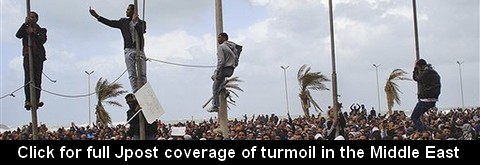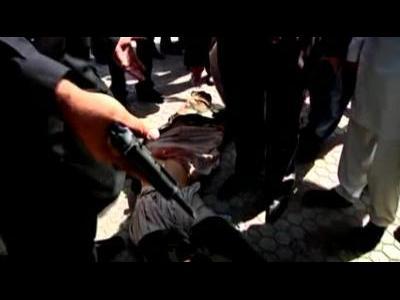(NSI News Source Info) TORONTO, Canada - June 18, 2011 Al-Arabiya reports Turkish envoy will bring 'warning letter' to Damascus calling for reform and the removal of Maher Assad from position of power.

 RELATED:
RELATED:


A Turkish envoy will travel to Damascus in the coming days to bring a "warning letter" to Syrian President Bashar Assad, telling him to enact reforms and to remove his brother Maher Assad from the command of Syria's Republican Guard and the Fourth Armored Division, Al-Arabiya reported on Saturday. Maher Assad is largely believed to be behind the three-month old violent crackdown on anti-regime protesters.
The Turkish envoy will ask for Assad to grant Syrians freedom to demonstrate, freedom of expression and to lift the ban on political parties, particularly the Muslim Brotherhood, according to the report.
Turkey is willing to give refuge to Maher Assad or organize refuge for him in a European country and will promise that he will not face criminal prosecution, Al-Arabiya reported.
The report came as Syrian troops and gunmen loyal to Assad stormed a town near the Turkish border, burning houses and arresting 70 people, witnesses said, in a wide-ranging military assault to crush a three month uprising.
"They came at 7 a.m. to Bdama. I counted nine tanks, 10 armoured carriers, 20 jeeps and 10 buses. I saw shabbiha (gunmen) setting fire to two houses," said Saria Hammouda, a lawyer from the small town of Bdama.
The town lies 2 km from the Turkish border, in Jisr al-Shughour region, from where thousands of people have fled to Turkey following military assaults to quell dissent against 41 years of Assad family rule
19 Syrians died on Friday when Syrian government forces fired at demonstrators demanding the removal of President Bashar Assad in the biggest protest since unrest against Baathist rule erupted in March, activists said.
UN split over Syria sanctions


Angelina Jolie meets Syrian refugees in Turkey
Actress and UNHCR goodwill ambassador Angelina Jolie has visited camps along Turkey's border with Syria, where she met refugees who have fled the country since the beginning of the unrest.
More than 9,000 civilians are currently living in the Altinozu camp, which is being managed by the Turkish Red Crescent.

Speaking during her trip, Ms Jolie praised the work of the Turkish authorities for welcoming the refugees, but said she was "disturbed" by the children's understanding of their situation.
The UN says that at least 1,100 people have died in Syria as the government has cracked down on demonstrations that began in March
*Link for This article compiled by Roger Smith from reliable sources
Jerusalem Post & Reuters*Speaking Image - Creation of DTN News ~ Defense Technology News
*This article is being posted from Toronto, Canada By DTN News ~ Defense-Technology News
Contact:
©COPYRIGHT (C) DTN NEWS DEFENSE-TECHNOLOGY NEWS
©COPYRIGHT (C) DTN NEWS DEFENSE-TECHNOLOGY NEWS
©COPYRIGHT (C) DTN NEWS DEFENSE-TECHNOLOGY NEWS
COPYRIGHT (C) DTN NEWS DEFENSE-TECHNOLOGY NEWS
COPYRIGHT (C) DTN NEWS DEFENSE-TECHNOLOGY NEWS
COPYRIGHT (C) DTN NEWS DEFENSE-TECHNOLOGY NEWS
COPYRIGHT (C) DTN NEWS DEFENSE-TECHNOLOGY NEWS
























